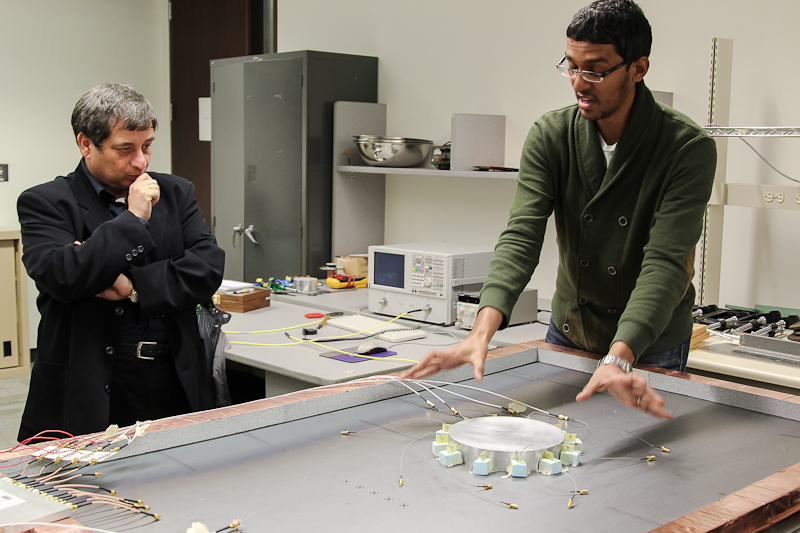
Two University of Toronto researchers have created an invisibility cloaking system, sparking the imagination of Harry Potter and science fiction fans alike.
Electrical and computer engineering professor George Eleftheriades, and his PhD student Michael Selvanayagam published their design of the cloaking system in the Physical Review X scientific journal Nov. 12.
Eleftheriades explained that when looking at an object, light rays are being bounced off the object and forming an image in the back of your retina.
“If there was any way to make this light that bounces off the object just stop there and not come back to your eyes, it will become invisible,” he said. “And that’s what we did.”
By surrounding an object with tiny antennas that radiate an electromagnetic field, Eleftheriades and Selvanayagam created a system that prevents the light rays from bouncing back into one’s eyes.
The first demonstration of an invisibility cloak system came in 2006 by researchers at Duke University, Selvanayagam said. It consisted of shell materials that forced the light to bend around an object but was large and only applicable to small objects.
Selvanayagam said he and Eleftheriades had a different approach.
“Building off other work and our own ideas we quickly came to the idea of using sources to inject power into the system to hide the object, as opposed to materials, while keeping it thin,” Selvanayagam said. “Then it took us about a year to put together the system to design and test the cloak.”
The current uses of the cloak involve radio waves, the researchers explained. But a cloaking system that would allow living organisms such as humans to become invisible would need to involve light waves. Since this concept has not yet been developed, the technology created by Selvanayagam and Eleftheriades would not make people invisible.
The cloaking system would instead be used for security purposes, controlling electromagnetic fields and practical applications like improving cellular service, Eleftheriades said. But he said an invisibility cloak in this science-fiction idea of the term may not be far away.
“Invisibility is one of these human desires, like flying in the past, which has not been fulfilled yet,” he said. “It is not inconceivable that in a few years, invisibility technology will become a reality even for light.”
Brittany Anderson, a Carleton University student and Harry Potter enthusiast, said her initial reaction after hearing of the invisibility cloak was of “pure excitement.”
“It could mean that science can further the ability for other elements in the book which would be really awesome,” she said, adding how she plays recreational Quidditch at Carleton.
Eleftheriades recognized the growing excitement and imagination their invisibility cloak has sparked.
“Science fiction is slowly but steadily moving from science fiction to reality,” he said. “Although my guess is that it will never be as perfect as depicted in science fiction art.”





